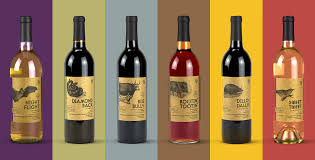Australia is losing millions of vines to overproduction, which has smashed grape prices and jeopardized the livelihoods of winemakers and growers.
Tens of millions more vines need to be torn up.
Australia has been especially badly hit by the global decline in wine consumption, as demand for its main product—cheaper red wines—is shrinking at the highest rate. China is also a market that Australia has depended on for growth up until recently.
The most recent estimates indicate that in mid-2023, the world’s fifth-largest wine exporter had almost two billion litres, or roughly two years’ worth of production, in storage. Part of it is spoiling as owners rush to get rid of it at any cost.
Fourth-generation gardener James Cremasco observed his grandfather’s rows of grapes being removed by clanking yellow excavators close to the southeast town of Griffith. “There’s only so long we can go on growing a crop and losing money on it,” he said.
In irrigated inland regions like Griffith, where Italian migrants arrived in the 1950s and brought vine-growing techniques, about two-thirds of Australia’s wine grapes are grown.
The districts surrounding Griffith are struggling, with unpicked grapes shriveling on vines, while major winemakers like Treasury Wines and Carlyle Group focus on more expensive bottles that are selling better.
Calabria Wines’ third-generation owner and winemaker, Andrew Calabria, remarked, “It feels like an era is ending.” “It’s hard for growers to look out the back window and see a pile of dirt instead of vines that have been there as long as they’ve known.”
As far as the eye could see, masses of twisted and gnarled timber held the remnants of 1.1 million vines that formerly made up one of Australia’s largest vineyards.
The most harmed wine is red. According to data from industry group Wine Australia, the average price of the grapes used in areas like Griffith dropped to A$304 ($200) per tonne last year—the lowest level in decades and a decrease from A$659 in 2020.
Although many producers believe the government could do more, the government acknowledged the serious difficulties growers face and stated it is dedicated to supporting the industry, even as it projects lower prices this year.
According to Cremasco, a tonne of his red grapes brought in little more than A$100. According to Jeremy Cass, the head of Riverina Winegrape Growers, a farmers’ group in Griffith, up to 25% of the vines must be pulled up to balance the market and raise prices. That would wipe off more than 20 million vines over 12,000 hectares (30,000 acres), or around 8% of Australia’s entire vine area.
In other areas, vines have also been pulled out by growers and wineries.
“Even if half of Australia’s vines were removed, the oversupply might still exist,” a Western Australian winemaker stated. Nevertheless, a lot of growers who refuse to tear off vines are losing money in the hopes that the market will improve.
According to Tim Mableson, a wine analyst at KPMG, “It’s chewing up wealth.” He thinks that 20,000 hectares (49,000 acres) of vines need to be removed nationwide.
GIVING IT AWAY
Drinking less alcohol and choosing more expensive wine when they do is becoming more popular due to health concerns among people globally.
Notable wine producers like Bordeaux, Chile, and the United States are also facing an excess of wine; thousands of hectares of vines have been uprooted in these sought-after regions.
Australia lost China’s largest wine export market in terms of value in 2020 when it stopped imports due to a political conflict. Nor does it provide farmers with any financial assistance to help them eliminate vines and excess wine, unlike Europe.
Although China is anticipated to reopen imports this month, the glut will not be filled because demand there has declined far more quickly than it has elsewhere.
Two-thirds of the value of Australian wine exports, which totaled A$1.9 billion in the year ending in December 2023, came from wine sold for less than A$10 per litre, the majority of which was produced from grapes cultivated in regions like Griffith, according to Wine Australia.
Some regions are doing better than others, like Tasmania and Victoria’s Yarra Valley, which produces a greater amount of white wines and lighter, more expensive red wines that are becoming more and more sought-after.
However, groups of thousands of liter-capable metal storage tanks dot Griffith.
Andrew’s father, Bill Calabria, stated that “everyone is trying to clear wine,” and that vineyards were “all but giving it away” to make room for the next vintage.
Nut and citrus trees are becoming increasingly popular among growers. Cremasco is planting pruned trees on his rubbed-up land to make more money, and an adjacent firm, GoFARM, is planting more than 600 hectares (1,500 acres) of almonds in place of grapes.
“Family grape growers won’t exist in the coming generations,” Cremasco continued. “It’ll be all big corporates, and all the local young guys will be working for them.”

















